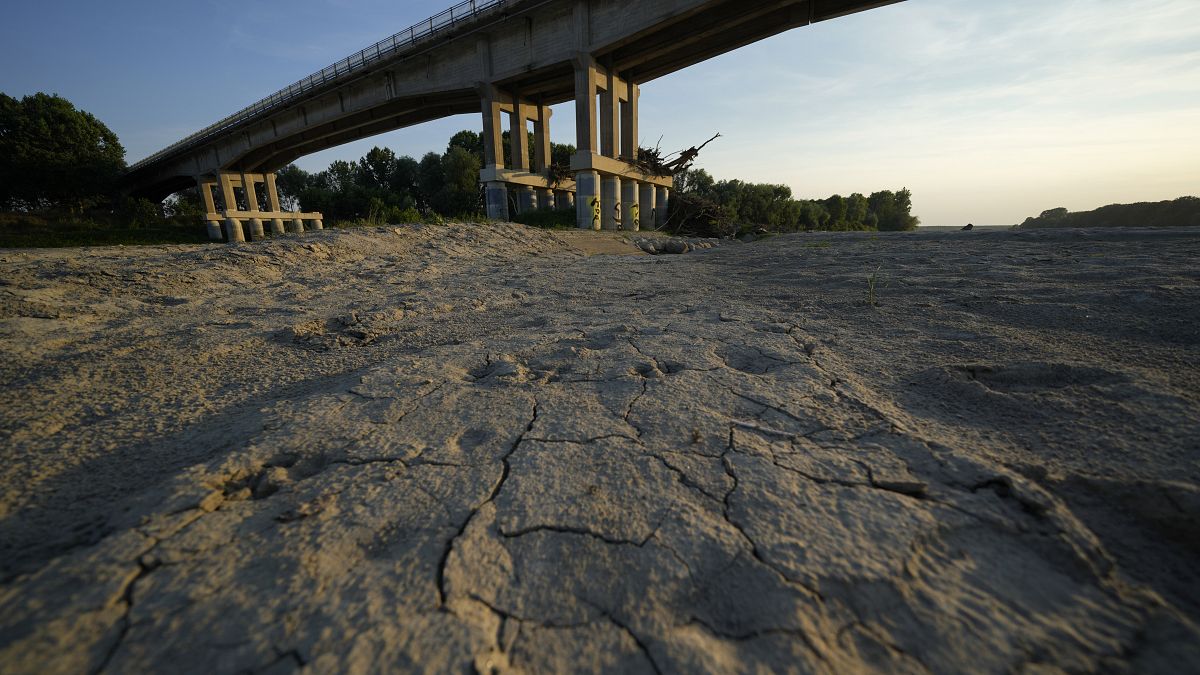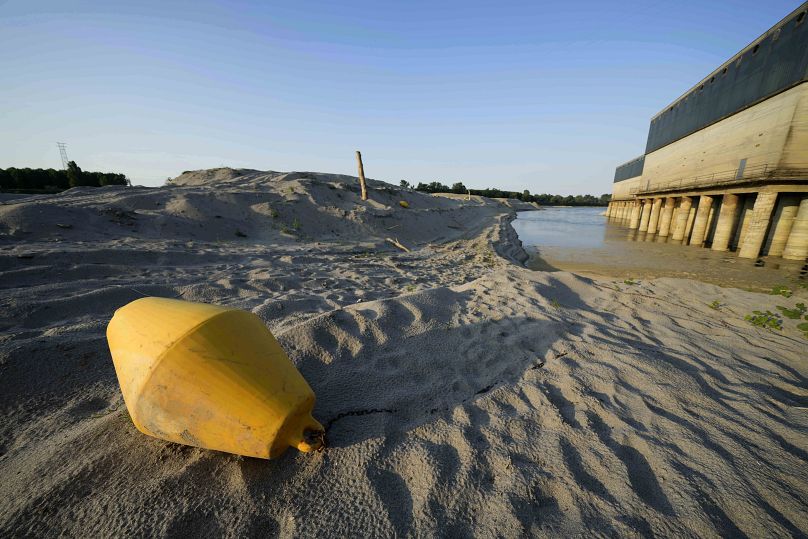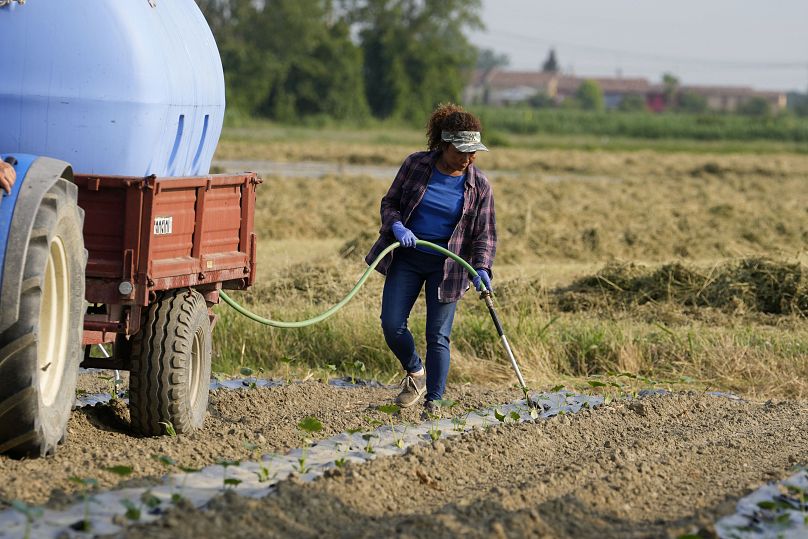Drinking water is already being rationed.
A part of northern Italy is in the grip of its worst drought for 70 years.
With barely any rainfall for 110 days, River Po, the country's largest, is three metres lower on average and is turning into an expanse of sand.
The drought -- the worst since 1952 according to the Po Basin Authority -- is having unprecedented effects: drinking water is being rationed in 125 municipalities across the region and crop irrigation threatened in the most densely populated and intensively farmed area of the country. Lake Maggiore is close to its lowest level since 1946.
"In some territories, it has not rained for 110 days," said Meuccio Berselli, secretary-general of the Po River District Authority.
"Tanker trucks are already in action to supply water because local reservoirs are linked to springs that are no longer there."
The 652-kilometre River Po -- which runs from Venice to Turin -- so low, that fishermen are now able to walk in the middle of where water used to flow.
With a flow rate currently six times lower than the seasonal June level and a water level four metres below the Po's hydrometric zero, fishermen are now able to walk to the middle of the river on dry land.
Hidden since 1943 beneath the water at the Internati island natural park near Gualtieri, a WW2 shipwreck has now resurfaced.
The 50-metre-long Zibello barge used to transport wood before it was sunk during the war.
"It is the first time that we can see this barge. Due to the scarce water and the drought the level of the water is so low. In the past years we could not see it," says Raffaele Vezzali, a local cyclist.
Berselli added: "We are in a situation where the river flow here is approximately 300 cubic metres per second. Normally in this area, we have almost 1,800 (cubic metres per second), so we are now down to one-sixth. We haven't seen such a crisis in 70 years. From the beginning of scientific statistical measurement, 70 years ago, we never had such data."
Berselli is frantically working on a resilience plan to guarantee drinking and irrigation water to millions of households and to the Po valley farmers who produce 40 per cent of Italian food.
Parmesan cheese, hams, wheat, high-quality tomatoes, rice and renowned grapes grow in huge amounts in the Po valley, also known as the Italian food valley.
Water tankers have already started refilling empty reservoirs in many cities of Lombardy and Piedmont.
"In 25 towns of the Bergamo province, drinking water is already transported with tankers that are refilling the reservoirs. In one hundred towns in the Piedmont region this is also already happening," said Berselli.
"But then in the downstream final part of the delta, near Ferrara, where we are supplying drinking water to more than 250,000 people and also in the area of Rimini there is a real risk of not having water, which means no drinking water for human usage. We can't allow this to happen and therefore we must support the river flow to make those communities resilient."
According to the CIA, the Italian Farmers Confederation, there will be a 30 to 40% reduction in fruit and vegetable production in the Po Valley.
"We are just at the beginning of the season, with the level of the Po River at an all-time low (so no stockpiles), with 25% less rainfall than the average of the last two decades," said Marco Piccinini, president of fruit growers of Confagricoltura Emilia.


